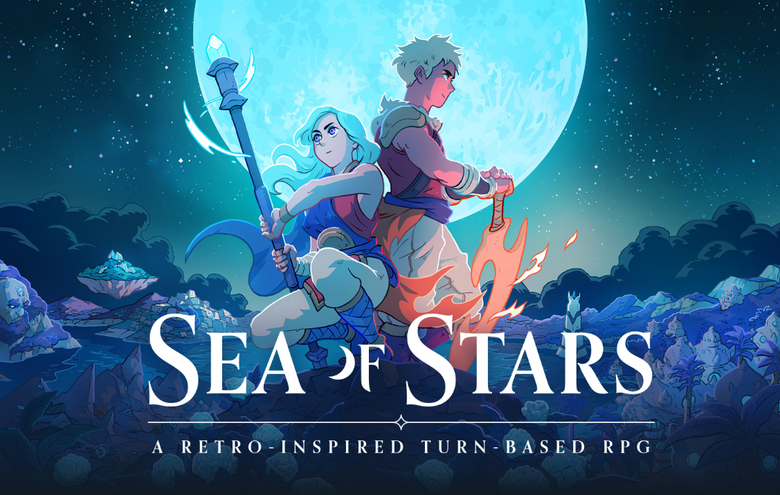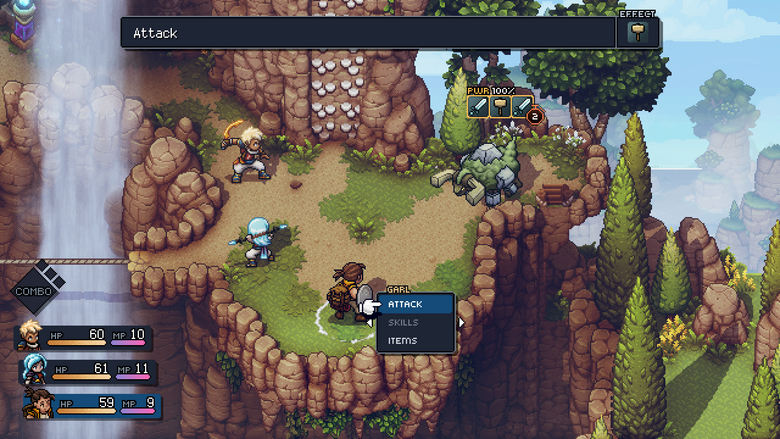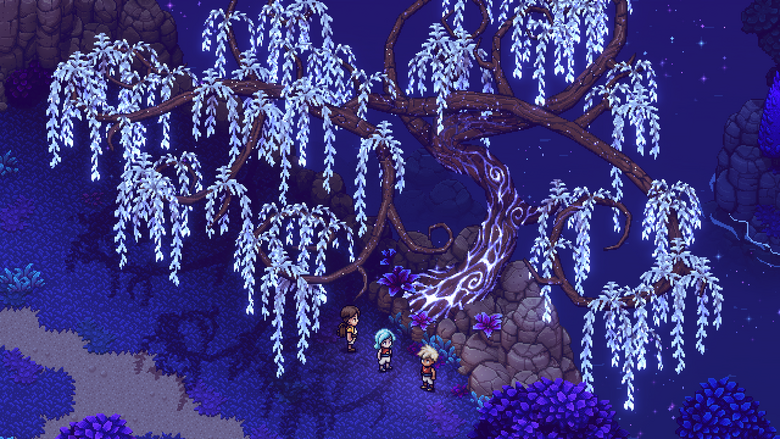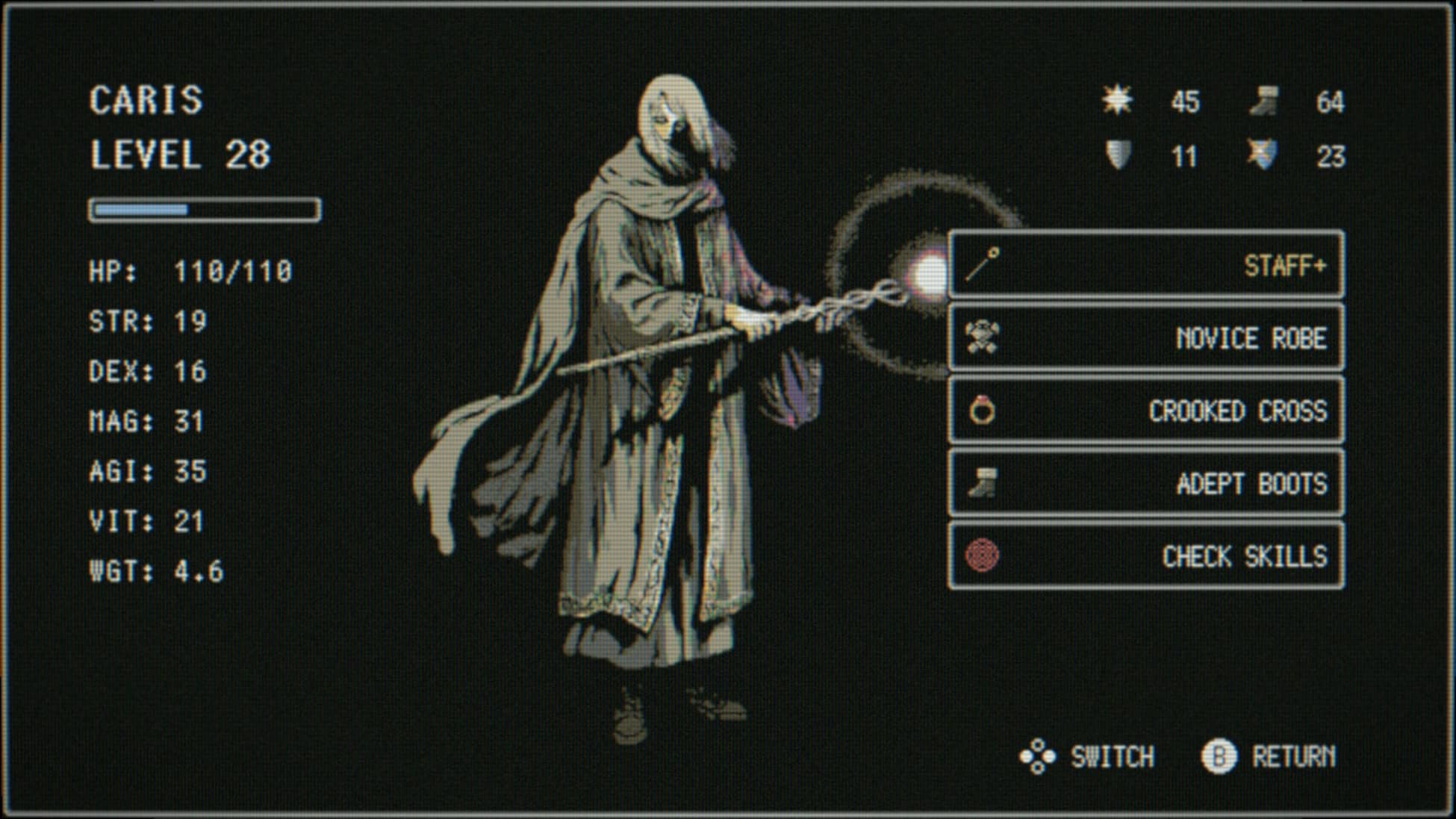REVIEW-IN-PROGRESS: Sea of Stars shines impossibly bright
I’ve done and seen a lot in Sea of Stars so far, but there’s still more for me to tackle. I didn’t want to rush my way through the experience to hit the embargo, but I certainly have plenty to say about the game at this point. That’s why I thought I’d share a review-in-progress that will be updated in the near future with my final thoughts.
Sea of Stars was created by Sabotage Studio, the same team that made The Messenger. I happen to be a huge fan of that game, as not only did it offer the rock-solid gameplay I expect from an action platformer, it also threw in some unique wrinkles and features to build something quite fresh. The Messenger made me extremely eager to see what Sabotage Studio would follow up their hit with, and the answer to that is Sea of Stars.
Sea of Stars is pretty much as far from The Messenger as you can get in terms of gameplay, as the team decided to head the RPG route this time around. That said, the same approach the team took with The Messenger is at play in Sea of Stars as well. You get the kind of gameplay and experience you’d expect from an RPG honoring the 16-bit era, but there’s also some original ideas and fresh mechanics that result in something that feels both familiar and new.
Where The Messenger and Sea of Stars truly differ is just how far new ideas are taken. While The Messenger sprinkled in some novel takes on the genre, Sea of Stars dives headfirst into gameplay features and twists that really help to set it apart from the RPG classics it’s inspired by. Yes, you may have seen similar ideas in titles here and there over the years, but I honestly can’t think of an RPG that mashes together all of these elements while still throwing in completely original pieces. It’s that expert blend of tried, true, borrowed and new that helps Sea of Stars stand out as something not only distinctive, but undeniably alluring.
I think I’m in a very interesting, albeit embarrassing position to talk about Sea of Stars, and it’s due to my gaming history. For those who don’t know, I only recently started playing RPGs regularly. For decades on end, I found RPGs to be too scary to get involved with. The mechanics, text-based battles, damage numbers and all of that intimidated the hell out of me, so I stayed far, far away. I would pop in every now and again to play a Mario & Luigi title, but outside of that, RPGs were never part of my gaming diet.
Just a couple of years ago, I decided to get over my fear of RPGs by picking up some classics and working through them. I kicked things off with Earthbound, and by the time the credits rolled, I wondered why I had waited so long to not only play that game, but RPGs in general. I certainly faced some struggles along the way and went through growing pains, but I never gave up. I came out the other side with a deep appreciation for what RPGs could be, as well as an embarrassment for shying away from them for so long.
Why can’t we all just get along?!
After Earthbound, I started playing through any other RPG classics I could get my hands on. Believe it or not, the most recent one I worked my way through was Chrono Trigger. Without a doubt, Chrono Trigger is the title most often brought up in discussions about Sea of Stars. I don’t know if that’s due to the game’s visuals or Chrono Trigger’s composer offering up a handful of tracks for Sea of Stars, but the comparisons are everywhere you look. Even Sabotage Studio has said they were inspired by Chrono Trigger (among many other titles) when crafting Sea of Stars. With that game fresh in my memory, and many other 16-bit RPGs close behind, I feel much better equipped to share some thoughts on Sea of Stars.
Without a doubt, Sea of Stars shares the DNA of classic RPGs in more ways than just visuals. The most important thing that’s screamed out at me so far is the sense of world-building. Sea of Stars, like any great RPG, does an excellent job of conveying the lands and its people through an engaging story. You’ll run through areas that offer some wonderful environmental storytelling, all while encountering a steady trickle of characters. There will be friends who join your side, foes wrapped in mystery, and others who have you questioning where their allegiances lie. All these faces come together in a far-reaching tale that’s shared through conversations, side-stories, and lore dumps that build intrigue the further you get into the game.
In Earthbound and Chrono Trigger in particular, you get the undeniable sense that you’re imparting on a journey that is more important than you can imagine. What might start out as seemingly humble eventually turns into something that goes far beyond what you’d expect. Those games offer adventures that not only task you with impossible missions, but leave you feeling changed once the story ends. I honestly believe I’ve grown as a person right alongside the characters in Earthbound and Chrono Trigger, and while I still have more to do in Sea of Stars, I can say with 110% certainty that this game has given me those same feelings.
That sense of growth is not easily achieved by a game developer, or to be honest, any creator of art. The fact that Sabotage Studio managed to weave that thread throughout Sea of Stars is incredibly impressive, and it’s helped considerably by the locations you visit. There’s something about the towns, dungeons, caves and more you explore in Sea of Stars that feels really special, to almost a magical degree. It’s painfully clear that the team put an unbelievable amount of time into the game’s visuals, tweaking everything down to the very last pseudo-pixel. The color schemes at play are impossibly gorgeous, the sway of trees in the breeze breathes life into a scene, the attention to detail in even the most mundane of rocks is splendid. Sea of Stars uses every bit of screen real estate to tell its story right along with the game’s text and characters, and it shines through bright as ever.
I don’t know that I can accurately express how amazing the visuals are in Sea of Stars, and this is coming from someone who doesn’t care about graphics one bit. I’ll play a game no matter what it looks like, but I can recognize when a title delivers in a meaningful way with visuals. Without a doubt, Sea of Stars goes far beyond just looking pretty.
Think this guy knows Lowly?
Just like in other areas, Sea of Stars was heavily influenced by RPGs from the SNES era, but what it achieves would have been impossible in those days. Any elderly gamers like myself will instantly recognize visual tricks, bells and whistles that you’d never see on a SNES. Those make for absolutely lovely eye candy, but far more importantly, they build a vibe that’s palpable. The use of lighting in particular is what really takes Sea of Stars to the next level, as it can instantly shift the mood in a completely new direction, acting almost as another narrator for the game. Specific gameplay mechanics are tied to the shifting of light as well, and it makes for an awe-inspiring sight every time.
If the visuals in Sea of Stars help push the story along and lure you deeper into the adventure, the battle mechanics are what will keep you absolutely hooked. The amount of layers Sea of Stars offers in battles is rather impressive, but it’s even more surprising how things never get muddled or confusing. From the first battle to later boss fights, everything has an absolutely delightful curve to it that makes for a very satisfying gameplay loop. Even if you’re tussling with a random group of low-level henchmen, the battles in Sea of Stars are still a joy.
Once again, Sea of Stars has used RPG history to build a solid base for battling, but then takes things further with ideas that dial things up. You start off with your basic party of characters that have the usual battle trappings; physical attack, magic attack, and so on. On top of that comes a combo meter that builds as you successfully land hits or block attacks. That combo meter has levels to it, and you can use different combos at each level. Along with that comes the ‘action’ element of the turn-based battles, and this is familiar to anyone who’s played a Mario & Luigi game. Basically, you can enhance your attack or lessen damage dealt to you by hitting a button at exactly the right time. This keeps you on your toes, as you’re not just picking your moves and watching animations play out.
Going deeper still is the extremely important enemy-stalling mechanic. Enemies will have icons above their heads that show what kinds of attacks they’re particularly bothered by. During your turn, unleashing an attack that matches that icon will cause the icon to disappear. Make all the icons disappear and you can cause an enemy to freeze in place for a few turns. This means you’re able to lay into them for a few rounds before they hop back into action. This element goes hand-in-hand with the turn counter for enemies. A little number alongside enemies shows how many turns until they fight back, which really lets you get strategic with your approach. Watch for the attacks enemies are susceptible to, see how many turns they have until they react, and formulate a plan of attack to basically stun-lock them.
On top of ALL that are little orbs that come flying out of enemies when you hit them. These orbs can be sucked up by your party members in order to up their damage for the next attack. This is where yet another piece of the strategic puzzle comes into play, as you can fill up one character with a ton of these orbs to let loose with a devastating hit, or you can absorb just a couple rounds to dish out some extra damage during a fight. Throw in enemies that can only be damaged by these orb-enhanced attacks, and you can see just how deep the options in combat run.
This tree must cost a fortune to light.
I know it sounds like there’s a ton going on in Sea of Stars’ battles, and there is. To be honest, I didn’t even cover everything! Still, the important point to drive home is that these options never leave you confused or befuddled. If anything, they make you consider battles from all different angles, and they leave a ton of room for experimentation. Even if you end up dying in something like a boss battle, you never feel truly defeated. You know that you can go back in next time and try a completely different tactic, and it could end up being the Achilles heel for your opponent.
The combat, the visuals, the story, the adventure itself…they all make Sea of Stars feel magnificent. For me, to say anything bad about those areas would be extremely nit-picky. Frankly, in those aspects, I can’t come up with anything that even makes me grumble a tiny bit. Sadly, where I can come in and offer up some slight criticism is the game’s soundtrack, and that’s an area where perhaps my hopes were a bit too high.
I want to be clear; Sea of Stars has a lovely soundtrack. There are some wonderful tunes that heighten the adventure and give me a big smile. I also wouldn’t say there are any bad songs in the game. I guess the best way to express my feelings is to say that the soundtrack so far has been serviceable to very good, while also being somewhat underwhelming. For every track that’s a toe-tapper, there are others that just kind of exist. Again, I recognize that I might be too harsh of a critic in this area, but wouldn’t feel right if I didn’t share my slight disappointment in the game’s soundtrack.
I really don’t like to compare games to other games, but sometimes I feel it does make sense. Sea of Stars is trying to be an iconic 16-bit-style RPG for a modern generation, and it aims to conjure up memories of the all-time greats while doing its own thing. In every other sense, Sea of Stars (so far) stands toe-to-toe with the best the genre has to offer. Sadly, in terms of soundtrack, things are a bit of a letdown. Perhaps the bar was set impossibly high, as a game like Chrono Trigger has an unimaginably beautiful soundtrack, especially when you consider the limitations of the day. The same goes for multiple Final Fantasy titles as well. Without those soundtracks still resonating today, perhaps my disappointment with Sea of Stars’ songs would be lessened, but that’s something I simply can’t know.
Outside of that minor, yet notable gripe, Sea of Stars has been above and beyond anything I could have expected. I was hyped for the game when it was first revealed, I was floored by the demo that was released a few months back, and the full game is easily a Game of the Year contender.
Sea of Stars isn’t a game that just cribs from the classics and gives them a fresh coat of paint. This is a game that understands why those titles worked and are so fondly remembered today, and it channels that essence to create something brilliant in its own right. It’s easy to mimic and find success, but it’s hard to thread the needle of homage and innovation. Sabotage Studio has done that with Sea of Stars, and while their freshmen outing was fantastic, their sophomore creation shows that this developer is capable of absolutely breathtaking things.








